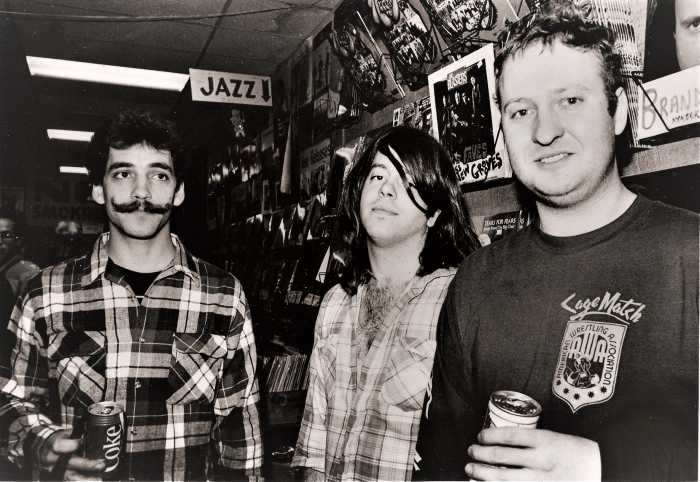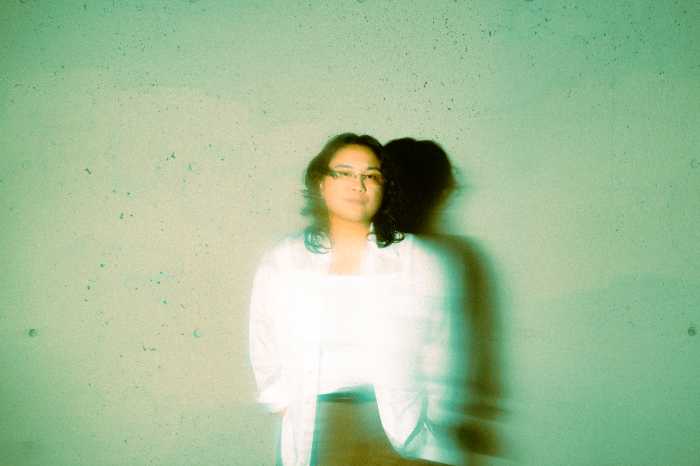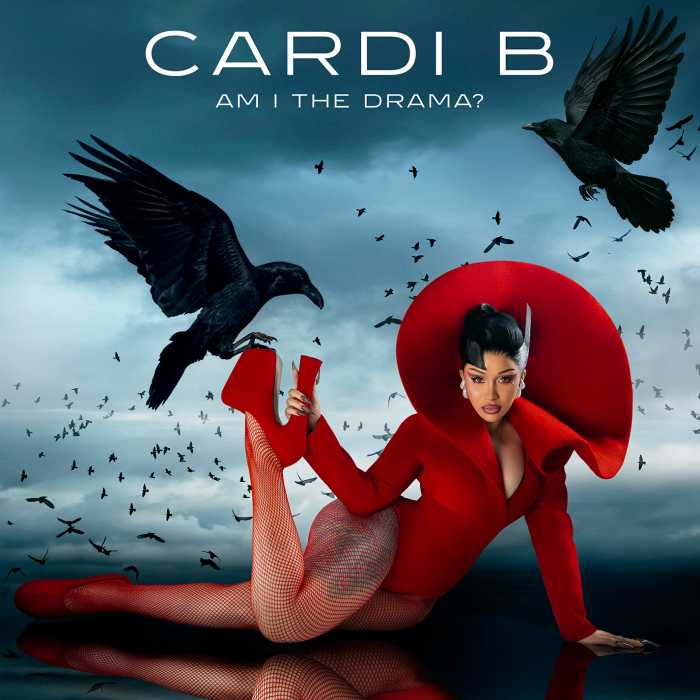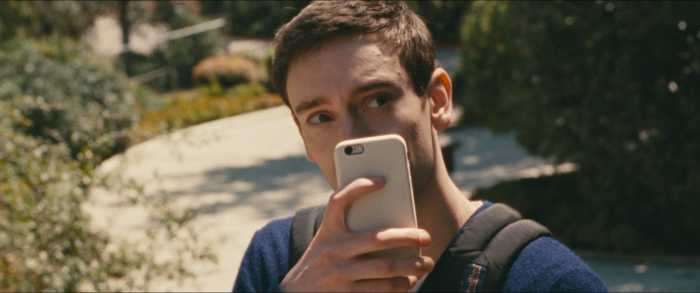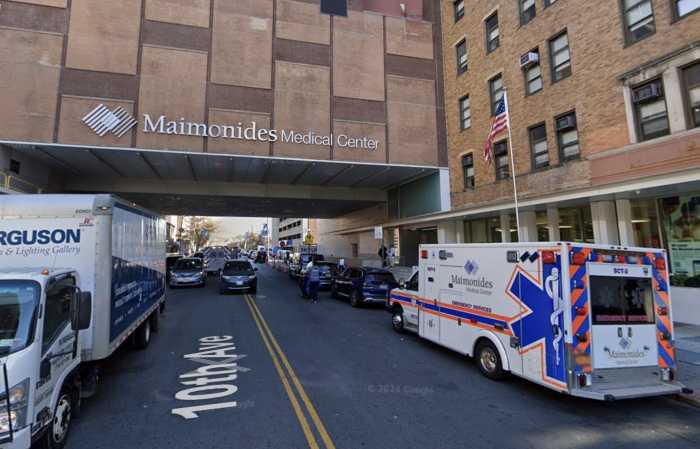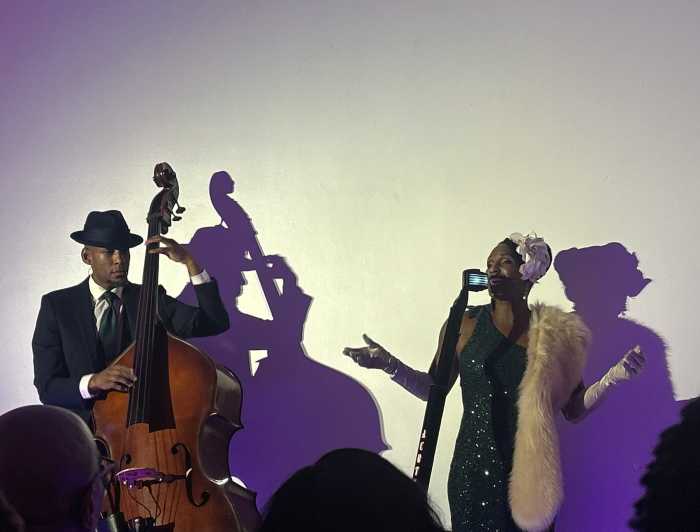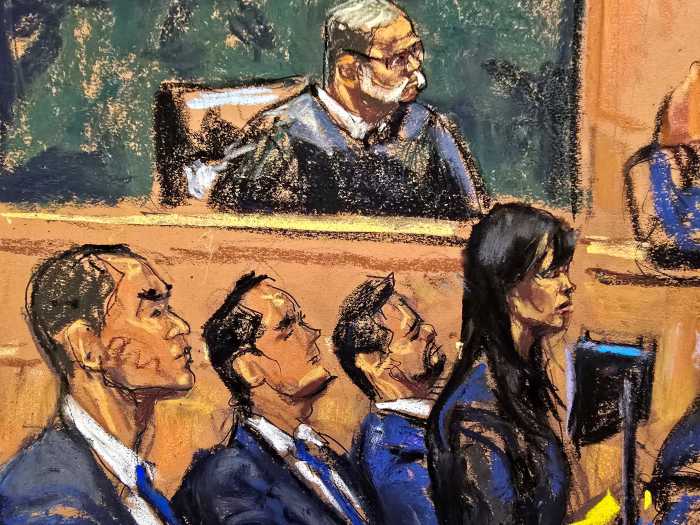BY LORI ORTIZ | Renee Archibald, Heather McArdle, and Luciana Achugar, all in the early stages of their choreographic careers, were chosen to create dances in a three-month residency at Barnard – the college at Columbia University for women and dance. Mary Cochran, the dance department chair, Marissa Beaty of WAX, the Williamsburg Art Nexus, and invited mentor Donna Uchizono were the overseers, but they didn't interfere. They even allowed for the possibility that the choreographers' works wouldn't be performed in the second Sugar Salon at the Henry Street Settlement's Abrons Art Center February 15 and 16, planned as the culmination of the residencies.
Archibald's commission, the 20-minute “Curtain Wall,” was first up. A Christmas tree lights up and two dance in place with large, intentionally ungainly, aerobic arm swings. Jennifer Lafferty shoots at Archibald and Jessica Ray with a toy gun. They take turns dying, or in unison, repetitive moves. Replacements jump in to revive an ongoing, rote trio. When Ray breaks away in an aside and stares out at us with her mouth open, the dance's embarrassing emptiness is amplified. That seems to be the intention and the ending satisfies – one dancer slides under the tree while the other two nuzzle the cyclorama.
Artists emerge in a nurturing Sugar Salon.
McArdle's “BLUEPRINTVIOLATION: Ballad of Arrivals & Departures” is great satire. Her projected stream-of-consciousness prose rolls down an angled wall outside the stage. A vertiginous video shot on a roller coaster ride fills the cyclorama. Ten dancers move with appealing 20-something energy, in and outside of a club scene. They humorously argue about the difficulty of relationships and dance-making. It's a total entertainment package.
Three red carpets roll out to chimes from “Les Noces.” Kate Atherton and Albert Bendix exchange information-age vows after wedding costumes are tied to the front of their naked bodies. Among the surreal, worst-case scenarios, there's a re-enactment of baby's first steps into familial dysfunction. Even the act of reenactment isn't safe from McArdle's bite. “BLUEPRINT” overflows with life, fun, energy, and imagination – but the disappointing finish is “…to be continued.”
Achugar's refreshingly clear “Franny & Zooey” was originally created for Tere O'Connor's 2007 Nothing Festival. It broke ground at Abrons, reworked for the Sugar Salon. Simultaneously bold and introspective, it speaks volumes for creative freedom – the premise of the Salon.
Achugar lies down on the stage in front of a video image. On the cyclorama she's immediately captivating, working out moves in the studio. Her image is distorted, slightly more squat in the video and she is joined by a cat who becomes the subject for a time. The dancers – Achugar, Hillary Clark, Melinda Lee, Melanie Maar, and Beatrice Wong – take feline poses, playing with that as a metaphor for woman while crawling on all fours like a cat. In the work's exploration of scale, we compare the tiny cat, the looming larger-than-life woman's image, and the live performer – all in perpetual, similar motion.
The differences collapse as they approach one another. The dancers circle the central bank of seats, embracing the audience with arms up in first position and port-de-bras in front of the first row. The dance is given a life of its own as they replicate the cat's nudity. Achugar doubles over into the cyclorama, featuring a tableau cut-out of her buttocks and legs. The rest climb up on the stage naked from the waist down. They roll over one another making small sighs and grunts as they tangle.
They form a coven with hoods, capes, and gray skirts. Finally, stripped, they dance trembling and proud. Zooey's man-about-town attitude, Franny's awareness, and the trilogy with the cat are joined in one powerful affirmation of the body beautiful – and it is a woman. It bodes well for the future.
Sugar Salon was created to foster new works and commissions by women, in a much-needed attempt to level the increasingly noticeable uneven field. This second salon des refuses was solid evidence of what's been missing.

